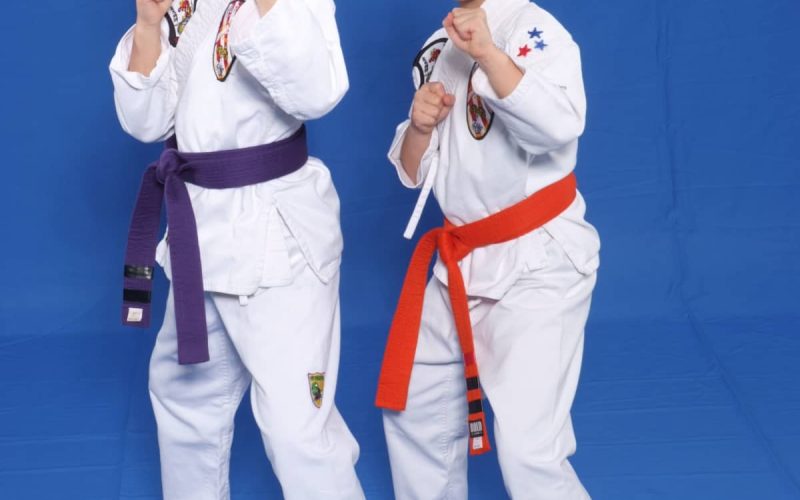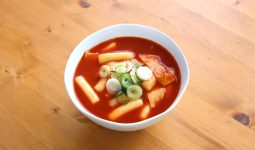The moves you see in movies are usually a combination of different types of karate. Karate is a martial art that originated in Okinawa, Japan, when Okinawans were barred from having weapons and forced to learn how to defend themselves using only their bodies.
Moreover, there is most likely some influence from Chinese martial arts, such as Kempo in karate.
Since its inception, karate has spawned numerous offshoots based on the interpretations of various instructors.
Karate is a martial technique for self-defense. It has gained popularity due to its emphasis on physical and mental discipline.
While certain varieties of karate use weapons, it is better known as a weaponless method of combat defense.
Furthermore, Karate schools, or ryus, are frequently shaped by a single teacher or creator who has left their imprint on the art.
There is a style of karate to enhance your skills in every element of your life, whether you want to take a karate class to protect yourself or get a terrific workout to lose weight and boost stamina.
Karate is noted for its structure and precise, deliberate movements. Which of these 10 styles would work best for you?
1. Shotokan
One of the most well-known styles of karate is Shotokan karate, which Gichin Funakoshi founded in Tokyo in 1938.
Gichin Funakoshi was one of the earliest karate instructors on the island of Okinawa. Shoto was his pen name for poetry, and Shotokan was the name of his karate system.
He first opened a karate dojo in Okinawa before moving to the United States to teach his brand of karate, which is very traditional and free of other influences.
Furthermore, some of Shokotan’s benefits include helping to develop self-esteem and increasing flexibility. It has also been shown to help with Coordination and balance.
In addition, it aids in establishing discipline and is one of the different types of karate that teaches self-defense.
2. Wado-Ryu
Wado-ryu is a martial art that combines jujitsu, karate, and Kenjutsu techniques. Hironori Ohtsuka devised this method of combat to educate pupils more about body mobility and fluency in avoiding a hit rather than fighting in contact.
The ideas of hard and soft are complementary in Goju-Ryu karate. Hard, closed-fist punches and soft, open-hand strikes are used.
Thanks to the classic Crane Kick maneuver, you’ve seen Goju-Ryu karate in action if you’ve watched the Karate Kid movies.
Furthermore, some of the benefits of Wado-Ryu include:
- Strengthening the body and making it more flexible.
- Improves stamina and concentration, as well as steadiness.
- Reduces stress by increasing mental control
3. Shito-Ryu
Shito-Ryu was founded by Kenwa Mabuni, who developed a form of karate with several short stances that is now one of the most popular in West Japan.
Furthermore, shito-ryu, one of the different types of karate, combines fast, straight motions with calm, flowing movements to give the student the best of both worlds.
Benefits of shito-Ryu include:
- Improving physical conditioning
- Enhances self-assurance
- Improve concentration and encourage discipline while also increasing self-esteem.
4. Uechi- Ryu
Kanbun Uechi founded the Uechi-Ryu karate style, an Okinawan martial art and one of the older systems.
There are many natural stances in this karate form, influenced by three animal Kung Fu styles: tiger, crane, and dragon.
It consists of eight pre-programmed fighting motions known as katas. Students must remember these katas and know how and when to use them.
Benefits of Uechi-Ryu include:
- Strengthening the body
- Enhancing mental fortitude
- Improving Coordination and self-discipline
5. Goju-Ryu
The ideas of hard and soft are complementary in Goju-Ryu karate. Hard, closed-fist punches and soft, open-hand strikes are among the tactics you will know to disciples, being one of the different types of karate.
Thanks to the classic Crane Kick maneuver, you’ve seen Goju-Ryu karate in action if you’ve watched the Karate Kid movies.
Goju- Ryu Advantages include: It increases the quickness with which you can react, improves balance, strengthens the foundation, alleviates stress, and teaches you breathing skills and how always to gain awareness.
6. Shorin- Ryu
Choshin Chibana developed the Shorin-Ryu karate style in 1933. This style of karate employs both offensive and defensive skills, providing a high possibility of survival in conflict.
Shorin-Ryu kata was constructed of maneuvers successfully used during the fight, essentially training in battle-like settings.
Shorin-Ryu blends close-in and long-range battle maneuvers and employs joint locking, point-striking, and grappling rather than kicking or punching.
Benefits of Shorin-Ryu include:
- Agility
- Reflexes
- Endurance
- Strength
7. Kyokushin
According to Black Belt Magazine, Kyokushin loosely translates to “society for the ultimate truth.” Masutatsu Oyama, its founder, believed in self-discipline in his practice.
However, The emphasis is on forceful single strikes and crushing hits. This training approach is particularly intensive in creating self-discipline and mental toughness.
Benefits of Kyokushin include:
- Lowering body fat
- Reduces stress
- Increases body strength
- Boast concentration
8. Ashihara
Shihara is a full-contact karate style designed to prepare anyone for an attack from a single or several attackers.
This sparring incorporates tactics from boxing, Muay Thai, and Ju-Jitsu. It largely relies on Sabaki’s teachings, which can take an opponent’s position and utilize it against them.
Furthermore, this karate style is similar to what you could see in a street brawl. When used in classes, it may provide a wonderful exercise.
The Advantages of Ashihara include:
- I teach self-defense.
- Increased aerobic activity boosts stamina.
- Strengthens the body and improves Coordination.
- Enhances concentration
9. Chito-Ryu
Dr. Tsuyoshi Chitose created the Chito-Ryu style of karate, which focuses on blocks, kicks, punches, and strikes.
This technique teaches pupils the foundations of self-defense and prepares them for competitive sparring. However, Chiro-Ryu combines the physical and mental requirements for self-defense in every situation.
In addition, It also employs several actions, including throwing and joint immobilization methods and subduing sequences.
Chito- Ryu’s Advantages include:
- Increasing stamina
- Improves physical mobility
- Increasing adaptability
- Promotes a healthy way of life
- Enhancing Coordination
10. Enshin
Enshin is one of the different karate types, a full-contact karate style founded in 1988 by Grandmaster (Kancho) Joko Ninomiya.
This style of karate teaches trainees how to exploit their opponent’s momentum and body posture. It also teaches you how to use the element of surprise to your favor by taking advantage of your attacker’s blind spots.
This type of karate helps you learn self-defense, become in better shape, and become more physically active.
Enshin’s Advantages include:
- Encouraging physical fitness
- Self-defense is taught.
- Improves self-esteem
- boosts self-esteem
- Enhances self-discipline








